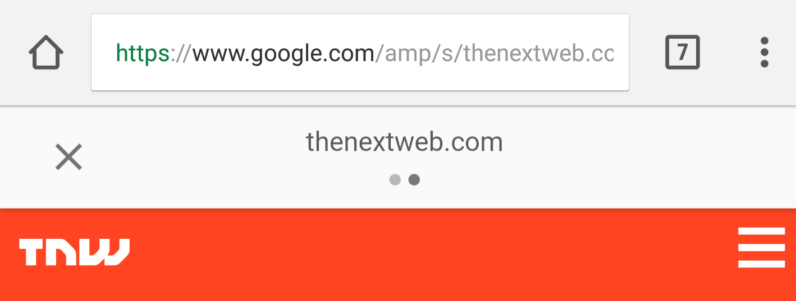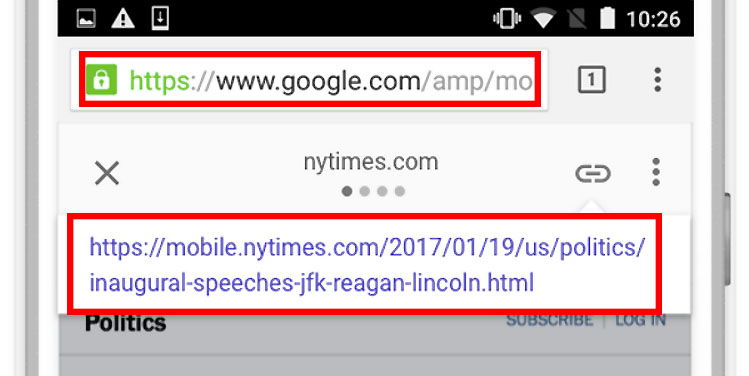
Google launched its AMP platform last year to make articles load more quickly from search results, in a move highly reminiscent to Facebook’s Instant Articles. Problem is, AMP pages are saddled with strange URLs that are different from the source article, which makes them a bit of a pain to share. Google is finally addressing that issue.
AMP articles use less data and load much more quickly than visiting a website through a traditional method, but as Google explains in its
blog, doing so requires some technical trickery that basically mean the posts have three separate types of URLs (in addition the original, non-AMP one). For example, you might have noticed that when trying to share an article from Google, the URL will often begin with “google.com/amp/” before the actual URL.

While not a huge deal – sharing the URL still works just as well as before – it’s a sloppy implementation. And if a shared link is opened on an AMP-compatible device, it will include the header bar, which looks totally out of place and takes up unnecessary space for users who didn’t open up the article from Google.
(We have to copy and paste links from Google all the time here at TNW; having to remove the AMP portion of the URL gets annoying fast.)
Google’s solution is a simple link button that displays the original URL. You can then long-tap on the link to share it as easily as ever.

This feature is beginning to roll out today. In the coming weeks, the Google app on Android will also now share the original, non-AMP URL when a user taps the share button (this is already the case on iOS), and Google is look into ways it can make sure the original URL is being shared on any platform AMP is viewed.
You might have to retrain your muscle memory to stop copy and pasting from the URL bar, but the new button is a simple fix that should make sharing articles a bit of neater experience. It’s a bit surprising it took this long – Facebook has had a ‘share’ button since the outset of Instant Articles – but better late than never.
Get the TNW newsletter
Get the most important tech news in your inbox each week.





